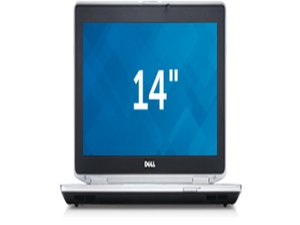The E6430 uses an LED panel - not a CCFL panel. The LED strips do fail, but unlike the CCFL displays where death within 5-7 years was normal with low end CCFL panels. With LED, those failures are less common, even on cheaper displays. When it happens the first step is to try a new panel, but if that doesn’t fix it then it’s a board driver issue if you have a complete backlight failure. Since yours works, it sounds like the LED strip is beginning to reach “half-life” where it works at a reduced brightness. This machine is from 2012-2013 before it was replaced by the E6440. The last CCFL laptops Dell released within the E64XX series is the D series - all E series machines are LED (inverter or motherboard driven).
If this was a CCFL laptop, it probably would have been flat out dead if it wasn’t using a Samsung or LG part. I’d much rather lose a few lumens after 9 years and have it work but at the potential expense of having to max out the brightness all the time over losing the panel because it came with a cheap AUO or Chi-Mei CCFL display that saved Dell 5 cents per laptop. LED panels fail differently - they run X amount of hours at full brightness (50,000 hours average) and then reduce to 80% for the rest of their life. The E6430 is old enough I would suspect there’s more than a handful at that 80% reduced brightness halfway point.
If you’re that concerned, buy a new display and see if it helps. These either use an 1366x768 HD panel (768p; 18N2T/KJ262) or an 1600x900 HD+ panel (900p; GJ494/P7FFH). Since you didn’t mention which one you have we can’t help you find the display, but if I had to put money on it it’s 768p if you don’t specifically know it’s got the 900p panel - people know if you special order like that, or the seller is quick to mention it. Unlike transition machines like the E6440 where the early Intel IGP usually uses LVDS (iDP for Radeon) and then iDP on all late production boards, this is a 100% LVDS series. However, that *does* limit you to the original display unless the cable is compatible, or a cable and screen is purchased if you don't change the entire assembly.
With LVDS systems, it’s generally easier/cheaper to find a good assembly that doesn’t require you to gut the old one for a display upgrade rather then “forcing” it to work by opening a large portion of the PC, and replacing a cable. iDP versions are usually an easy enough upgrade since a lot of the time, they share one cable between all 2-3 panel options like the iDP E6440 and E7440. I’ve used it to my advantage on a cracked LCD 4310M 8690M E6440 with the 1080p IPS panel to get a 768p TN iDP in quickly, even if it’s a disgusting downgrade.



 418
418  296
296  158
158